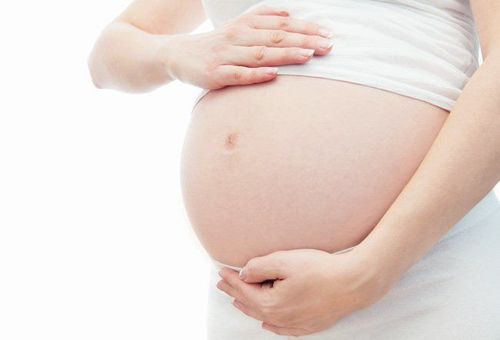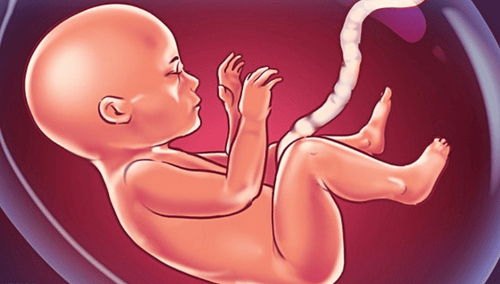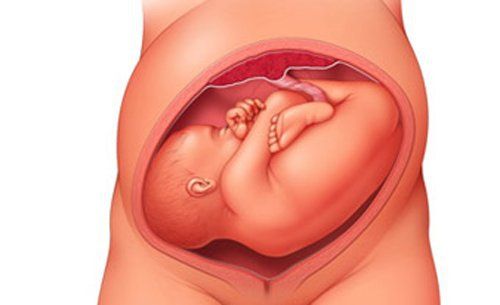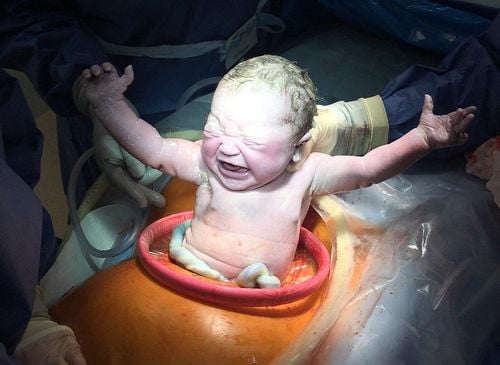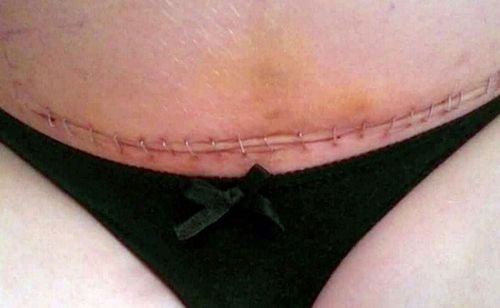This is an automatically translated article.
It is estimated that in 3-4% of pregnancies up to the last weeks of pregnancy, the fetus refuses to turn its head to the right position. So what is the cause of the pregnancy not turning around?
1. Why does the fetus need to turn its head in the right position?
The transition of the fetus to the correct position (head down into the vagina and face and body towards the mother's back) is a natural process that enables a baby to be born healthy and safe. In this position when you go into labor, the baby's head will come out first.
However, there are also cases of unfavorable fetal position such as the buttocks and/or legs below, the baby's head on top (called breech/reverse). This is a dangerous obstetric situation that forces doctors to perform an operation to ensure the health of mother and baby.
2. When does the fetus turn?
In fact, depending on the mother's development, health and uterine elasticity, each fetus will have a different time of turning. Experts say, the time when the fetus turns around at about 32-36 weeks is the ideal time. However, there are also exceptions when the fetus turns early from the 28th week or near the time of labor, there are signs of changing position.
To know the exact time of the pregnancy as well as the actual status of the pregnancy, the mother should go for an ultrasound. In addition, pregnant women can also feel the process of fetal head turning through a number of signs such as: baby's limbs movement, fetal position.
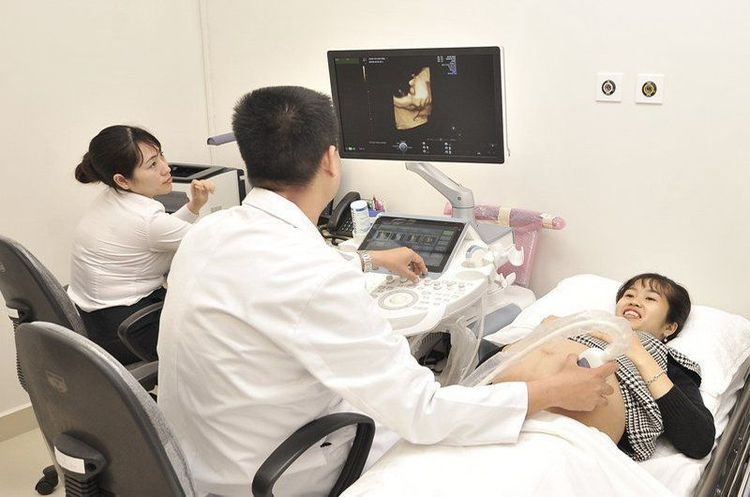
Người mẹ nên đi siêu âm để phát hiện sớm nguyên nhân thai không quay đầu
3. Causes of pregnancy not turning
Many people wonder "Why does the fetus not turn its head", the answer of some doctors may surprise you such as: "The fetus does not like to turn" or "The baby wants to". However, there are the following ancillary factors that can partly explain the cause of the pregnancy not turning:
Multiple pregnancy (more than 1 pregnancy); Premature birth; Amniotic fluid too little or too much; Placenta previa (placement of the placenta in an abnormal position); The fetal umbilical cord is too long; The mother's uterus is irregularly shaped or has fibroids.
4. Why does the fetus not turn its head in danger?
In case the fetus does not turn its head, or it turns but the nape of the neck is towards the mother's spine, it is called the posterior occipital position. In this situation, pregnant women often face a number of problems such as:
High risk of caesarean section; prolonged labor; Feeling of severe back pain (not due to uterine contractions). Failure to turn the head also increases the risk of the baby being trapped in the vagina and deprived of oxygen from the umbilical cord. Therefore, it is difficult to give birth naturally and there is a risk of affecting the life of the baby.
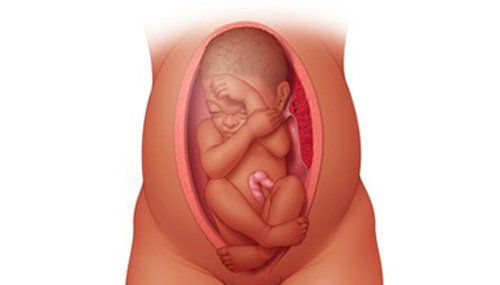
"Tại sao thai nhi không quay đầu" là thắc mắc của rất nhiều mẹ bầu
However, with today's modern medical technology, cases of unborn fetus with high risk of difficult birth and high complications are actively indicated for cesarean section. Many practical data have proven that with breech birth, cesarean section is safer than natural birth, helping to reduce mortality and birth complications. In order to proactively determine the position of the fetus as well as the appropriate birth plan, pregnant women should actively conduct periodic health checks and regularly discuss with the doctor.
To protect the health of the mother and baby comprehensively as well as to help the mother feel more secure during labor, Vinmec provides a package Maternity service. With this package, the mother will have regular antenatal check-ups and routine tests to monitor her health. The fetus is monitored for fetal heart rate and uterine contractions with an obstetric monitor at 37-40 weeks of gestation to predict the exact time of delivery. During labor, the mother will be given pain-relieving techniques during and after birth such as: epidural anesthesia, pudendal nerve anesthesia (applied to normal delivery), postoperative pain treatment (applied to childbirth). surgery). In particular, Vinmec is deploying cold plasma services to help wounds heal quickly such as: cesarean section, perineal stitches, baby umbilical cord, and lactation to avoid swelling, redness, infection, and dryness. , flat, beautiful straight edge, little pain, no bruising, no convexity.
Please dial HOTLINE for more information or register for an appointment HERE. Download MyVinmec app to make appointments faster and to manage your bookings easily.




